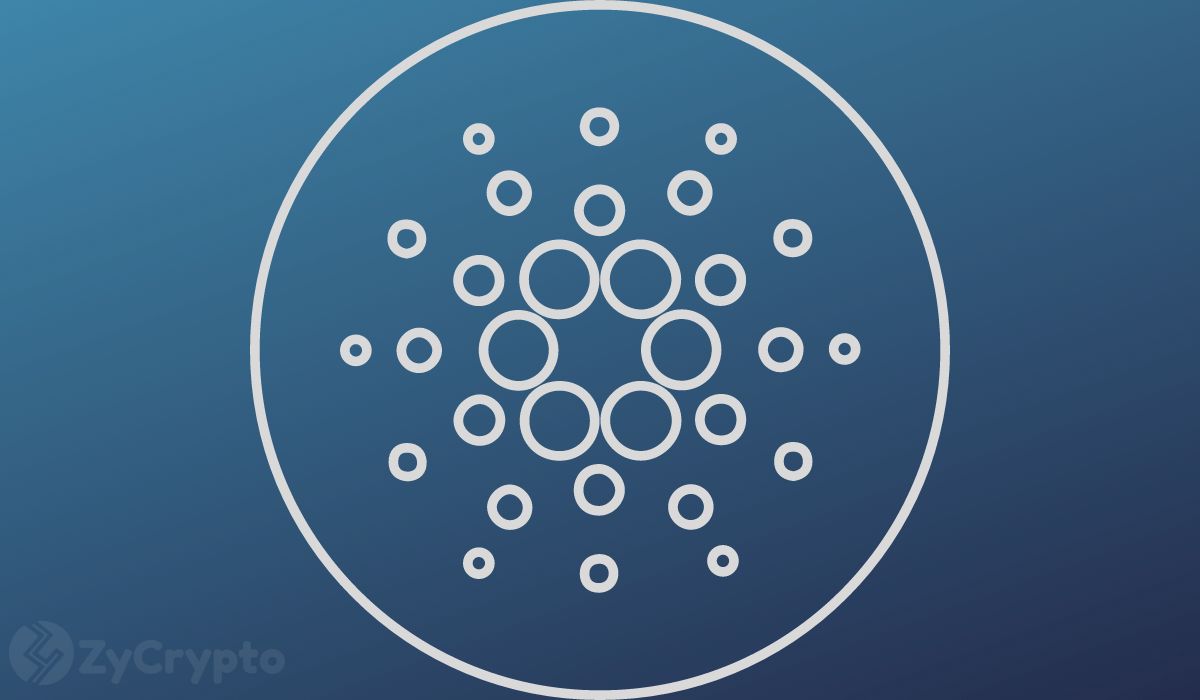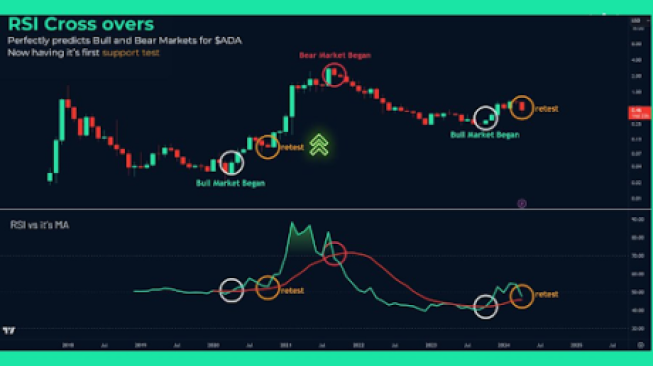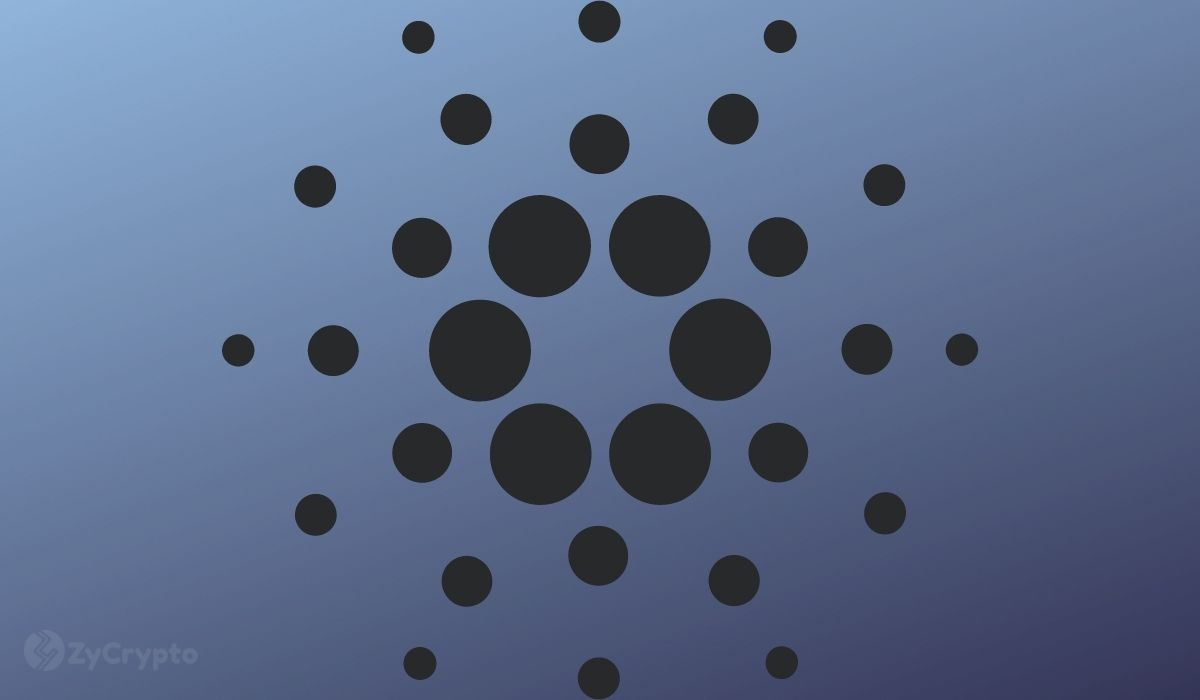How To Stake Cardano (ADA)
How to stake Cardano (ADA). A short guide to get started staking on Cardano. Takeaway: You have many options on where to stake: Cardano wallets, third party wallets, exchanges. When it comes to Cardano’s native wallets – Yoroi is...

How to stake Cardano (ADA). A short guide to get started staking on Cardano.
Takeaway:
- You have many options on where to stake: Cardano wallets, third party wallets, exchanges.
- When it comes to Cardano’s native wallets – Yoroi is the easiest, Daedalus the most complete
- You have to choose a stake pool which you will delegate your stake to and there are some things to consider when making that choice
- After an initial set-up period of 15-20 days you will receive rewards every epoch (5 days)
- You can unstake anytime
Staking is a way to earn passive income in crypto and was more thoroughly described in the recent article ‘How to earn passive income with crypto’. Yet, technically speaking staking is basically a way a proof of stake (PoS) blockchain validates transactions and secures the network. Cardano – specifically the IOHK Foundation – is considered to have been a major contributor to proof of stake research. Having said that, let’s dive into how to stake your ADA and earn some interest on your coins.
When it comes to staking ADA there are essentially two options: Delegating stake into a stake pool or setting up your own stake pool in order to become a stake operator. This guide will only focus on the first option, as the latter requires some technical know-how, a computer running 24/7, and you probably wouldn’t be reading this how-to article if you are about to become your own stake pool operator.
Choosing a wallet
First off, you have to choose a wallet out which you will be staking. There are multiple options here and while we can’t get into all of them here, we can think of them as belonging to one of three categories: Native wallet (Yoroi, Daedalus), third party wallet (Exodus) and exchange wallet (Kraken, Binance). We will only focus on the first category ‘native wallet’ staking, as the other two are pretty straightforward and pretty much only require you to press ‘stake’ (check out the resources at the end of this guide).
Cardano natively supports two wallets: Yoroi and Daedalus [There’s also AdaLite but it’s an independent project]. What’s unique about staking ADA is the fact that the staking process is non-custodial, which means that you still keep your coins in your wallet while delegating your stake. This takes out a significant risk when it comes to staking, as you do not give your coins to someone else.
So what’s the difference between them?
Yoroi is a so-called light-wallet for Cardano and works as a browser extension (similar to Metamask). Yoroi doesn’t store a complete copy of the blockchain within the wallet but connects to trusted servers that have the full copy. This makes the wallet very fast and easy to use. Yoroi actually also offers the option to connect with a Ledger hardware wallet, which significantly ups the security while holding and staking your ADA.
Daedalus on the other hand is a heavy-wallet one could say. It runs a full node of the Cardano blockchain, meaning it downloads, stores, and validates a full copy of the blockchain on your device. While this does offer a few more features, it takes quite a while (multiple hours, depending on your internet connection) to download a copy of the blockchain the first time, as well as syncing with the blockchain every time you open the wallet which will only frustrate you if you don’t want to get involved deeper.

Daedalus also offers the ability to connect with a hardware wallet devices: Ledger and Trezor.
Both wallets can be found through the Cardano website, as well as by clicking on the links above.
In the next step, we’ll look at choosing a stake pool. Basically, there are many different staking pools through which you can earn rewards. While most of the pools are fairly similar, there are some differences which is why it’s important to keep some things in mind when choosing a pool.
Now, get some ADA coins ready by buying them on an exchange (e.g. Kraken) and let’s get choosing a stake pool.
Choosing a stake pool
This is where it gets a little tricky for people but choosing a stake pool through which to start staking ADA doesn’t have to be too complicated. So, whether you’ve decided to go with Yoroi or Daedalus, you will find a list of a bunch of stake pools to choose from. The image below is an example of the Yoroi interface (Daedalus looks a little different but the idea is the same).

Top scoring stake pools in Yoroi
It can be a little overwhelming at first – numbers, abbreviations, colours, etc. But don’t worry, we’ll keep it very simple.
overwhelming when looking at a list of the pools through one of the wallets, with information on saturation, pledges, fee’s, luck, etc. popping up and a lot to consider. However, for our purposes, the most important things to look at are:
- ROA (return of ADA annualized)
- The pool size or saturation level
- The pledge [Yoroi actually does these things for us by scoring the pools].
So what are they?
ROA – the ROA percentage is the estimated % interest you earn in ADA annually based on the past 30 days performance of the stake pool. With staking ADA this is usually roughly somewhere in the range of 4-6%.
Pool size (pool saturation) – in order to maintain a high level of stake operator decentralization, Cardano introduced a saturation point at 63.6 million ADA. This means that when more than 63.6 million ADA is delegated to – staked in – a certain pool, the rewards will diminish. The idea is that it incentivizes people to move on to a smaller pool to keep certain pools from becoming too large. So it’s good to stake to a pool that has not reached the saturation limit and move to a new pool when it does.
Pledge – considering how much ADA is pledged to a pool is important because it shows how much skin the stake pool operator has in the game. An operator of a pool that has a pledge of 1 million ADA generally has a higher economic incentive to do a good job than a pool operator only pledging 100k, although one could get into arguments around whether that’s a general principle or not. So choose a stake pool that’s run by someone who is really in it.
Another thing to look at is the online presence of the stake pool operators and how they’ve set up their staking operation. Quite a lot of pools are run by active Cardano community groups – many have Twitter and YouTube accounts or Telegram channels, feel free to do your own research and find one that you would like to support. Independent tools such as adapools.org offer in-depth information on various stake pools and can be of great help in finding the right pool for you.
So let’s briefly run through the process of staking in Yoroi. For Daedalus, it’s pretty much exactly the same, except that the user interface looks slightly different. Should you run into any problems, there are a lot of wonderful tutorials online but you’ll surely manage to do it on your own.
Staking in Yoroi
After you’ve set up a Yoroi wallet and sent some ADA to it you’re ready to go (the minimum staking requirement is currently 10 ADA, so make sure you have at least that amount in your wallet).
When you’re looking at the Dashboard, look to the right-hand side and click on ‘Delegation List’.

Next, choose a pool to delegate your funds to (stake in). For this tutorial, we will go with [GOAT] Goat Stake. Then click on ‘Delegate’ and click ‘Okay’ and you’re done.

When are rewards paid out?
When you stake ADA for the first time it will take somewhere around 15-20 days until you start receiving your first staking rewards, after that rewards will be paid every five days. Because the Cardano blockchain goes through different time slots called epochs, stakes are measured in accordance with that. Every epoch is five days long and at the end of every epoch, a ‘snapshot’ is made of all the delegated stakes. It takes 3-4 epochs for your stake to start earning you some passive income, one can think of the staking reward process in terms of it ‘lagging’ behind. If you’re interested this can be better understood by checking out an explanation of Cardano’s Delegation Cycle, otherwise, just remember that your staking rewards are lagging behind a little.
To get a sense of how much you can earn by staking ADA, check out this Staking Reward Calculator.
Unstaking
Whether you choose to spend, sell or delegate to a different pool, you can unstake at any time. You will still earn staking rewards for five to fifteen days (the lag time) but after that, you won’t anymore.
Staking through an exchange or external wallet
If everything discussed above just feels too complicated or you don’t want to bother with choosing a pool, looking at operators and opening up a Yoroi or Daedalus wallet, you can also stake through an external wallet or an exchange.
We won’t offer an in-depth tutorial of how that works and just presuppose that you have an account with an exchange like Kraken or Binance or a software wallet like Exodus. Staking ADA this way doesn’t require choosing a stake pool because they either have their own stake pool or are partnered up with one. Staking this way pretty much only requires you to go to the rewards/earn section on their site or wallet, choose ADA and click ‘Stake’, the rest is taken care of by them. Should you, however, feel overwhelmed by this, check out the resources below:
Conclusion
The guide briefly touched on the various options when it comes to staking ADA – staking through a supported wallet (Yoroi or Daedalus), staking through an external wallet (Exodus) or staking through an exchange (Kraken or Binance). We then concentrated on staking through Yoroi or Daedalus and explored the most important aspects when it comes to choosing a stake pool, getting rewards, and understanding how Cardano staking words.
Hopefully, you now have an idea of how you can start staking ADA and find all relevant links and resources embedded within this article.
Happy staking!
SNEKbot by DexHunter on CARDANO
Cardano's Telegram Trading Bot live on Cardano mainnet!TRADE NOW!










